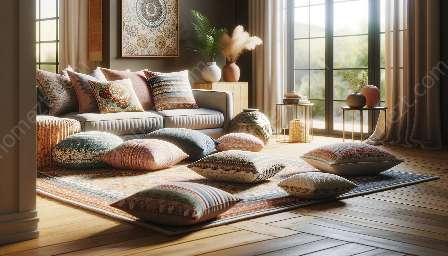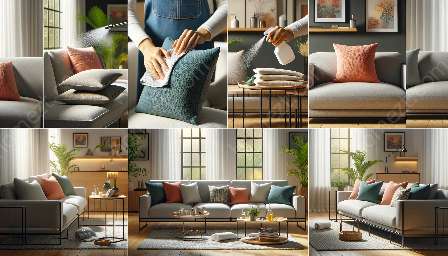When it comes to home furnishings, pillows and cushions are essential elements that can enhance the comfort and aesthetic appeal of a space. In recent years, there has been a growing trend towards sustainability and eco-friendly practices in the home decor industry. As a result, the use of recycled materials in pillows and cushions has gained significant attention.
Eco-Friendly Practices
One of the key reasons for the increasing use of recycled materials in pillows and cushions is the emphasis on eco-friendly practices. With environmental concerns becoming more prevalent, consumers are actively seeking products that have a lower impact on the planet. By incorporating recycled materials into pillows and cushions, manufacturers are able to align with this growing demand for sustainable options.
Recycled materials can include a wide range of sources, such as recycled polyester, post-consumer plastic, and upcycled fabrics. These materials offer a second life to resources that would otherwise end up in landfills, contributing to a more circular and environmentally responsible approach to production.
Sustainable Manufacturing
Furthermore, the use of recycled materials in pillows and cushions promotes sustainable manufacturing practices. By reducing the need for virgin materials, manufacturers can decrease their reliance on limited resources and minimize the environmental impact of their production processes. This shift towards sustainable manufacturing is not only beneficial for the planet but also resonates with consumers who prioritize ethical and eco-conscious choices.
Additionally, some companies are taking it a step further by utilizing organic and biodegradable materials in combination with recycled components, creating a holistic approach to sustainability in their product lines.
Quality and Comfort
Despite the focus on sustainability, pillows and cushions made from recycled materials do not compromise on quality and comfort. Advances in manufacturing technology have enabled the creation of high-quality, resilient, and soft textiles from recycled fibers. Whether it's a plush cushion or a supportive pillow, these products offer the same level of comfort and functionality as traditional options, proving that sustainability and luxury can coexist.
Design Diversity
Moreover, the use of recycled materials in pillows and cushions presents an opportunity for design diversity. With a wide array of recycled fabrics and fillings available, manufacturers can explore unique textures, colors, and patterns, creating a diverse range of eco-friendly home furnishing options. This allows consumers to embrace their individual style while making environmentally responsible choices for their living spaces.
Consumer Awareness
As consumer awareness regarding sustainability continues to grow, the demand for pillows and cushions made from recycled materials is expected to rise. This shift in consumer behavior reflects a greater consciousness towards the environmental impact of everyday products. By incorporating recycled materials into their offerings, home furnishings brands can cater to this evolving consumer mindset, gaining a competitive edge in the market.
The Future of Home Furnishings
The incorporation of recycled materials in pillows and cushions represents a positive step towards a more eco-friendly and sustainable future for home furnishings. As the industry continues to embrace innovative materials and manufacturing processes, the options for recycled pillows and cushions are expected to expand, offering consumers an even wider selection of stylish and environmentally conscious choices for their living spaces.
By prioritizing the use of recycled materials, pillows and cushions contribute to the larger movement towards a circular economy, where resources are continually repurposed and waste is minimized. Ultimately, this approach not only benefits the environment but also contributes to the creation of healthier and more sustainable living environments for individuals and families.




























































